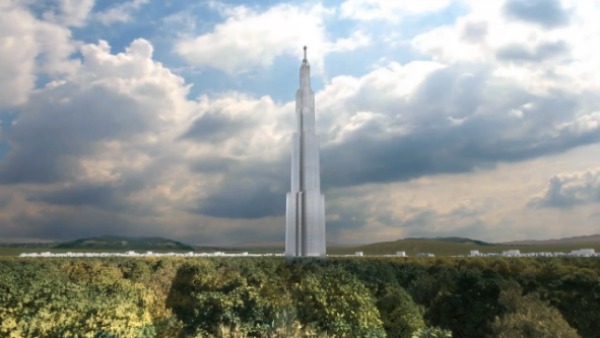| |
 Posted Aug 3, 2013, 3:58 PM
Posted Aug 3, 2013, 3:58 PM
|
 |
Registered User
|
|
Join Date: Aug 2002
Location: Toronto
Posts: 52,200
|
|
|
The Skyscraper of the Future May Be Built Like Legos
The Skyscraper of the Future May Be Built Like Legos
August 1, 2013
Read More: http://blogs.smithsonianmag.com/idea...lt-like-legos/
Quote:
.....
The world’s cities are in the midst of a skyscraper boom, and not with just tall buildings, but with ones officially designated as “supertall.” Nearly 600 buildings of at least 200 meters—or about 60 stories high—are either under construction or in the planning stages. That would almost double the number that height within the next 10 years. Now only three skyscrapers are above 500 meters, or more than 1,600 feet. By 2020, there are expected to be 20 more.
- Some of this obviously has to do with making a statement, particularly with countries wanting to transform their images into one that’s more modern, diverse and economically glamorous. Some is driven by ego, pure and simple—the chairman of the Broad Group, Zhang Yue, for instance, has become almost a messianic figure among his 4,000 employees, who all wear matching outfits, along with name tags bearing motivational slogans, such as “Innovate Life Now” or “Perfect Oneself.”
But there are other reasons that have more to do with demographic trends and technological innovation. Here are just a few of them:
• And one day we’ll all just get stuck in elevator traffic: Already more than half the people on Earth live in urban areas; by 2050, seven out of 10 will. Growing upward is seen as a wiser, more sustainable option than sprawling outward. The truth is that seeing skyscrapers as office buildings has become so 20th century; now they’re designed as places for people to live, and do just about everything else. If and when Sky City is built, it will have, in addition to apartments for tens of thousands of people, multiple shopping malls, schools, restaurants, swimming pools, tennis and basketball courts and movie theaters, not to mention its own hotel, hospital and giant vertical garden. Since residential and retail spaces require narrower floor plates than offices, mixed-use buildings can go higher with the same amount of material. And skyscrapers with a lot of tenant options are a lot easier to fill. In 2000, only five of the 20 tallest buildings in the world were mixed-use; by 2020, only five won’t be.
• So long to basic cable: Believe it or not, one of the key factors limiting how high buildings can go is the weight of steel elevator cables. If they stretch much beyond 1,600 feet, they’re at risk of snapping under their own weight. But a Finnish company has developed a cable it calls UltraRope, which is made of carbon fiber and weighs almost half as much. UltraRope, say engineers, will make a 300-story building possible.
• Like Legos, only bigger: The Broad Group made a big splash in late 2011 when it erected a 30-story building in 15 days. That’s right, two weeks. It was able to do this only because each floor was pre-fabricated in a factory, then connected on-site. While it may be hard for most of us to imagine pre-fab skyscrapers, people in the high-rise business don’t think that’s far-fetched at all. Some even envision tall buildings of the future being built in a factory, then fitted together by an army of robots. Clearly, the modular approach is catching on. More than 60 percent of the $4.9 billion Atlantic Yard project in Brooklyn will be constructed off-site, including a 32-story building. And if Sky City does move forward, it would mean that the tallest building in the world would be modular. That’s how the company can plausibly talk about Sky City being finished by next spring. Speed is one big advantage. Cost is another. The Broad Group says Sky City should cost roughly $850 million to build. The Burj Khalifa in Dubai cost $1.5 billion.
• Now those are bad vibes: Even 3-D printers have played a role in accelerating the skyward building boom. Engineers can now print multiple 3-D models of a building, then test each one in a wind tunnel. The models are covered with sensors that take pressure readings that are fed into a computer simulation that reveals a building’s vulnerable spots. The engineers can even re-create the building’s future surroundings—hills, highways, other buildings—to see what kind of wind patterns they may create. What they want to avoid is a phenomenon called vortex shedding, where even a moderate wind flowing around a structure can cause it to sway and actually vibrate—not the effect you’re looking for 150 stories up. To counter it, architects create rounded edges or notches and cut-ins at the building’s corner. A great example is the design of the 116-story Imperial Tower which will dominate Mumbai’s skyline. The building is skinny and rounded, but to keep it from oscillating, its facade is broken up with random cut-outs—balconies in some places, gardens in others. The point, say the architects, is to “confuse the wind.”
.....
|

__________________
ASDFGHJK
|
|
|



